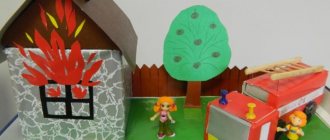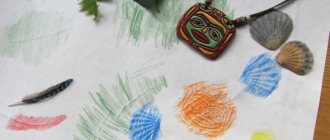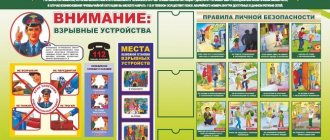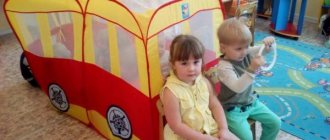Class hour on life safety “Safety at home and on the street” for elementary school children
CLASS HOUR “SAFETY AT HOME AND OUTDOORS”
Goals and objectives: to introduce children to the basics of safety at home and on the street, to bring them to the understanding that safety depends on themselves, to prepare children to get out of unforeseen situations, to develop attention, memory, intelligence. Equipment: pictures and slides depicting safety rules, a crossword puzzle, pictures with puzzles, pictures with dangerous objects.
PROGRESS OF THE CLASS.
Task 1. -Solve the crossword puzzle. 1. I am needle's relatives, but I have no ears. (Pin) 2. Look at me - I’m all full of holes. But I deftly rub carrots for you. (grater) 3. They hit Yarmulka on the back of the head, He doesn’t cry, He just hides his nose. (Nail) 4. Who is ready to cross their two swords over a piece of paper? (Scissors) 5. Four small fires Call us to dine: “It’s time” (Stove) 6. On the table in a cap Yes, in a glass bottle A friend has settled - A cheerful light. (Lamp) 7. What is dangerous about me If there is no soup at the bottom? Only if the soup is hot, hide me from the children. (Pan) 8. Don’t touch it again! Not a toy - sharp... (Knife) 9. I am the most spirited worker, I stab as hard as I can. (Hammer) 10. I am pot-bellied and puffing, Rotozeev does not tolerate. If I want, I’ll pour boiling water over you. (Samovar) 11. At night, if I want, I’ll click it once and turn it on for the day. (Switch) 12. Two legs conspired to make arcs and circles. Keep two legs in a pencil case, not on an armchair, on the sofa. (Compass)
— The topic of our lesson will appear in the highlighted column. Task 2. - Solve riddles about kitchen items that can be dangerous.

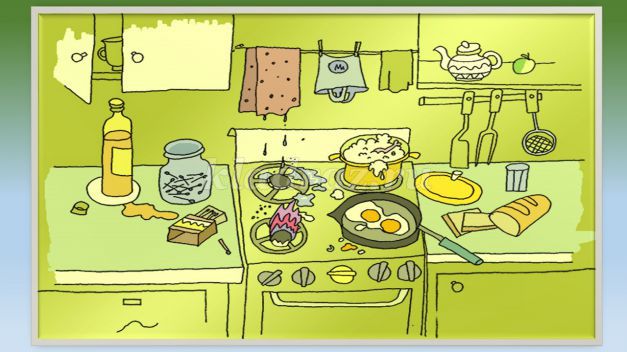
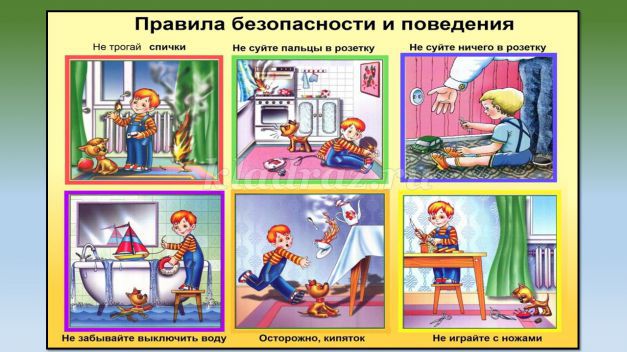
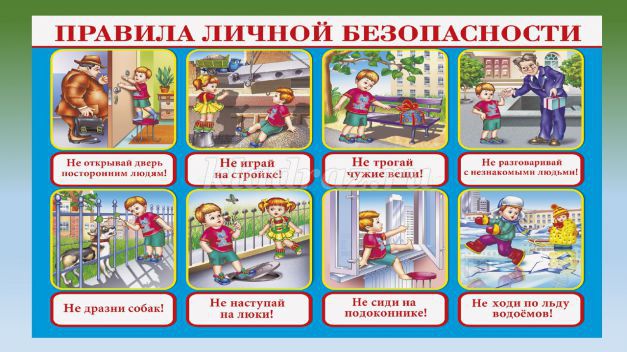
We recommend watching:
Test with answers on life safety for 4th grade students Test on life safety, 3rd grade with answers Extracurricular activity for 4th grade on life safety. Scenario Extracurricular lesson on life safety for elementary school on the topic: Summer
Similar articles:
Extracurricular lesson on Safety Basics for 3rd grade students
Reminders on traffic rules and life safety for elementary school
Role-playing game for younger schoolchildren. Appliances
Extracurricular lesson on fire safety in elementary school
Competitive program on fire safety, 2nd grade
Save and preserve: 7 blogs and projects about child safety
School "LizaAlert"
The website of the volunteer search and rescue team regularly publishes useful tips for children and parents on various topics.
These include detailed instructions on how to escape from a stalker on the street. They also released an analysis for children who are left at home alone (and this often happens during distance learning). The cards describe what to do if strangers try to get into the apartment and what tricks they can use to deceive the child. The school also conducts online classes where instructors review safety rules and answer questions from children and parents.
School "Stop the threat"
This school usually conducts classes offline (there are branches in many large cities, so getting to a lesson will not be difficult), but during the pandemic, online classes have also appeared. During the lessons, children are taught how to protect themselves from kidnappers, are told about the rules of behavior on the Internet (there are also a lot of threats there), and much more. Instructors conduct trainings for parents and children, individual and group lessons. The courses are paid, but there is one free webinar.
Lessons from Foxford School
The course is designed for children aged four years and older. Parents will not have to persuade their child to watch the lessons, because they are taught by Masha and the Bear from the cartoon of the same name. During the classes they talk about how to communicate with peers, escape from a fire, and much more. There are several lessons dedicated specifically to interacting with strangers. You can watch the first lesson for free, get a checklist for parents and take the test. The full version has more lessons, tests and homework available. It costs 3490 rubles.
Olga Bochkova Security Academy
The Academy offers both face-to-face training and online lessons and video courses on safety for children and their parents. Topics range from behavior with acquaintances and strangers at home, on the street and on the Internet, protecting personal and intimate boundaries, preventing bullying and cyberbullying, to rescue in emergency situations.
The average cost of online lessons is 450-500 rubles, there are video courses with interactive videos, gamification, training, prizes and expert support. The cost depends on the volume of the course and the level of participation - from 1,700 rubles.
On her blog on Instagram @olga.bochkova.academy, psychologist, teacher and security expert Olga Bochkova analyzes situations and gives specific recommendations to adults - parents, teachers, social workers - on how to raise children so that there is less violence in the world, and in the event of a collision With him, the children knew how to protect themselves.
Course by Saule Utegalieva
Before purchasing this course, parents can also take a short test and discuss it with their children to check what knowledge they lack. The course contains useful tips that will teach you how to talk to your child about safety. The author of the course explains how to come up with a family password, create a list of rules, spot threats, and much more. The course contains eight lessons, flashcards with lesson plans, and a workbook with additional materials. With a discount, the course costs 16,497 rubles.
Lessons from Yulia Yarmolenko
A teacher conducts sex education lessons for parents and children. Also on her website there are articles and a lot of material about protection from strangers. The author explains how to teach a child to build personal boundaries and respond correctly to violence. The article describes at what age you can discuss different dangers with your child. The material contains useful videos and stories. For parents who want to study the topic in more detail, the author recommends books.
Knowledge base on docdeti.ru
The site contains articles about children's health and safety, including material on underwear rules. This is an easy-to-remember basic list of rules that will help your child understand the importance of personal boundaries, teach them to communicate with relatives and strangers, and share their problems with loved ones.
Read more on the topic
How to help a young child understand his bodily boundaries
Child sexual abuse: stories of adult victims in their own memories
Playground safety: what to look for, how to prevent injury and why falls can be beneficial
Road safety lessons for schoolchildren
Every year on September 1, hundreds of first-graders rush to school. At first they are accompanied by adults, but the time comes, and the boys and girls go to classes on their own. School days are very busy, so children are not always attentive on the road. Our exercises will help you explain and remember the importance of traffic rules.
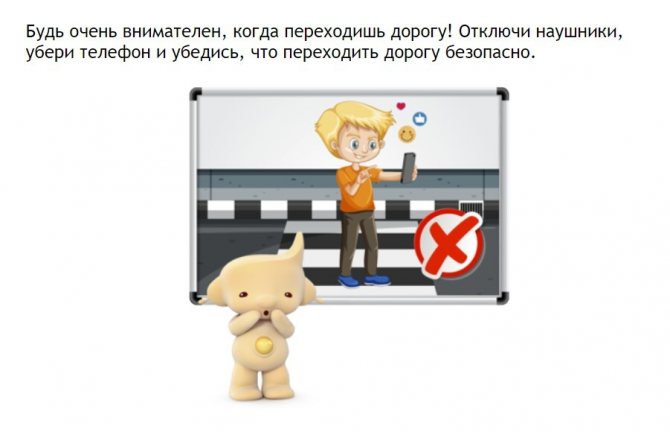
11 rules that children must follow
- Cross the street at the designated place. A pedestrian crossing with a special sign or traffic light will indicate this.
- Before crossing the road, stop, make sure it is safe, and then cross at a calm pace.
- When crossing the road, look both ways to see if there are any fast-moving cars.
- It is IMPOSSIBLE to cross the roadway when turning!
- Put away your smartphone and headphones and only then cross the road.
- It is PROHIBITED to run out onto the roadway!
- It is IMPOSSIBLE to cross the road between standing cars!
- When traveling in a car, be sure to buckle up! Don't stick your arms or head out the window.
- Take your time, be very careful! The car is very fast and does not always have time to stop immediately.
- Do not walk on the roadway, even near your house, only on sidewalks.
- Drivers may break the rules, so be aware and make sure you are safe before crossing the road.
Road safety for children
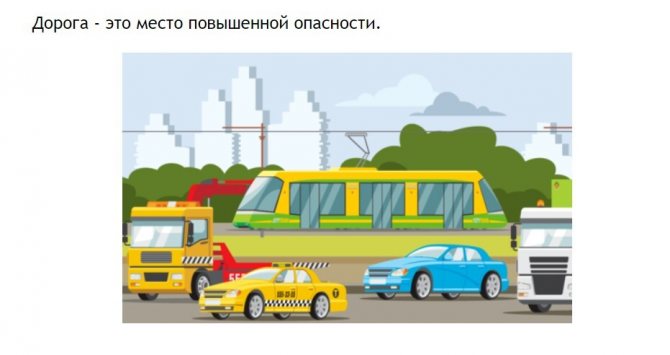
A child is the most defenseless road user. And every year the problem of road safety only increases. The number of cars and novice drivers is growing, which is not conducive to careful driving, and headphones and smartphones distract the attention of children on the roadway.
Traffic police officers regularly carry out the “Safe Roads for Children” campaign, but this, unfortunately, is not enough to radically influence child injuries on the roadway. This means that parents, educators and teachers all need to unite and introduce new methods for teaching traffic rules (traffic rules).
Development and education of children from 2 to 11 years old in a playful way

Start practicing right now
Start practicing
Today, an ordinary color poster with illustrations on the topic of traffic rules no longer attracts attention. Therefore, it is very important to conduct themed games in kindergarten, create educational cartoons for children, conduct instruction for schoolchildren and develop interactive activities on this topic. Only a comprehensive approach to the problem of road safety will help reduce the number of accidents involving children.
However, it is the parents who are responsible for what the child should know when he becomes a participant in traffic. They, like no one else, are interested in preserving the life and health of their baby. It is important to remember that it is necessary to introduce children to traffic rules long before they cross the road on their own.
Road safety lessons for kids
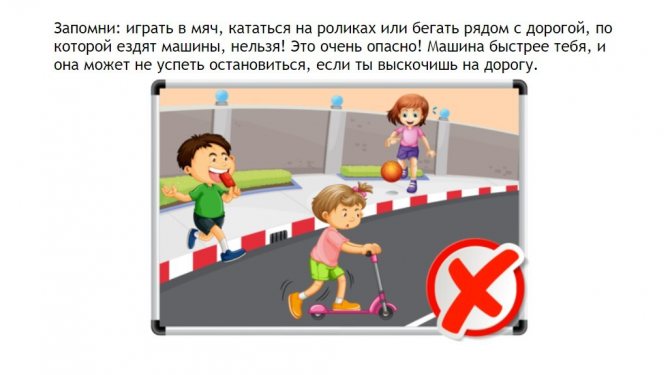
Little ones very rarely find themselves on the road alone without adults, but this does not mean that they do not need to be introduced to traffic rules. Adults should constantly tell them what to do when near the roadway, draw their attention to road signs and reinforce the meaning of traffic light colors. Simple and important safety lessons can help with this.
Lesson 1. Road at the entrance
Road traffic begins not with a traffic light at an intersection, but with the first steps at the entrance. Cars drive near the house, near a kindergarten or school, near a store, and on wide streets. Be careful wherever cars are driving!
Lesson 2. Rules for riding bicycles and scooters
- put on a helmet before riding your bike;
- You can only ride a bike or scooter on the sidewalks. Even in the courtyard of the house you cannot drive on the road where cars are passing;
- before crossing the road you need to get off your bike or scooter;
- You can only cross the roadway at a calm pace;
- When moving along the sidewalk, you need to be careful of passers-by.
Elementary School Safety Lesson Plan:
Undoubtedly, students come to school for knowledge. But there is nothing in the world more important than the life and health of students. The task of parents and teachers is to ensure the safety of children and teach them to take care of themselves. It is important for teachers to conduct a safety lesson before the start of the school year, especially in elementary schools, where children are just beginning their life journey.
Elementary School Safety Lesson Plan
First, you need to determine the goals and objectives of the event.
Purpose: to conduct a safety training lesson in an elementary school. Summarize knowledge on safety rules, discuss with students unpredictable situations in which each of them may find themselves, and teach them how to behave correctly in such cases.
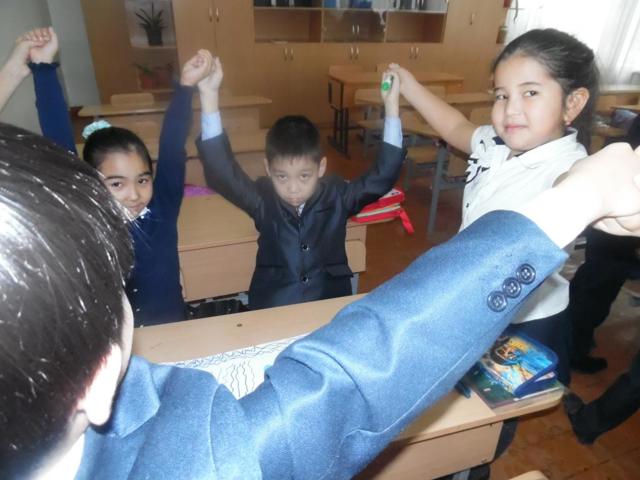
Tasks:
- Teach children to react correctly and make decisions in situations of danger.
- To foster respect for nature, introduce the rules of behavior in the forest
- Develop observation, attention, critical thinking.
Teacher (hereinafter U): - Hello, dear guys. I congratulate you on the Day of Knowledge. It's only been three months and you've matured so much. Your eyes are full of joyful sparkle, and you probably miss our friendly class.
Student performance. Reading a poem
Back to school! Back to school!
- Let's hurry up and pack our briefcase.
- There's no time for football anymore
- Now study is our goal.
- Here the teacher met us again,
- You are our mentor and our friend,
- You enter the school doors
- And light up everything around.
- And we promise to the whole class -
- We will only study with an “A”!
- Let's cultivate the desire in ourselves
- Study the sciences of the world.
U: A new academic year begins, which means that new gates of knowledge will open before us. Today we will teach a lesson on life safety in elementary school and learn how to maintain your health and life in difficult situations without giving in to panic. You will share valuable and useful information with each other.
Group work
The class is divided into 5 groups and a speaker is chosen. On the tables are cut up pictures depicting various safety rules that the children have violated.
- Group 1: A boy takes candy from a stranger.
- Group 2: A girl opens the door to a stranger.
- Group 3: The guys play ball on the roadway.
- Group 4: The child sits on the windowsill of an open window.
- Group 5: The boy is sleeping, and at this time a TV, a computer, a fan, a charging phone and several other household appliances are running in the room.
- U: Your task is to collect the details of the picture, glue it together and discuss with your group mates what serious violations are present in it.
- Students discuss the information given to them within the group, speakers voice the general opinion of the team, and finished posters are hung on the board. Safety rules are shared with the entire class:
- Never take anything from strangers or talk to them.
- When you are alone at home, do not open the door to anyone, even if the person introduces himself as a police officer, clinic employee, etc.
- Play only in designated areas.
- Don't sit by an open window.
- Do not leave electrical appliances plugged in.
A moment of relaxation
U: Now you and I will go on a hike. Sit comfortably and close your eyes. Listen and try to imagine everything I say.
The teacher plays the audio recording “Sounds of Nature”.
U: We are walking along a forest path, where there are many bright flowers and mighty trees. A playful stream gurgles nearby. The water in it is crystal clear. Somewhere above you you can hear the singing of birds, and under your feet there is a pleasant crunch of grass. And so we came to a bright clearing... Did you know that when going into nature, you need to know a number of certain rules, without knowledge of which you can encounter various difficulties?
Watch a cartoon about the rules of behavior in the forest.
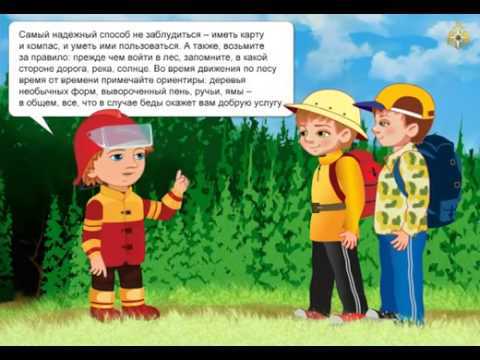
T: What rules are mentioned in this video? (the guys voice what they remember). Do not forget that the owners of the forest are animals.
When we come to nature, we go to visit them, and we need to behave as expected: we must not make noise, destroy nests, offend animals, break tree branches, or scatter garbage.
And the most important rule: put out the fire before leaving, otherwise something irreparable may happen - a fire that will destroy thousands of lives of defenseless animals and plants.
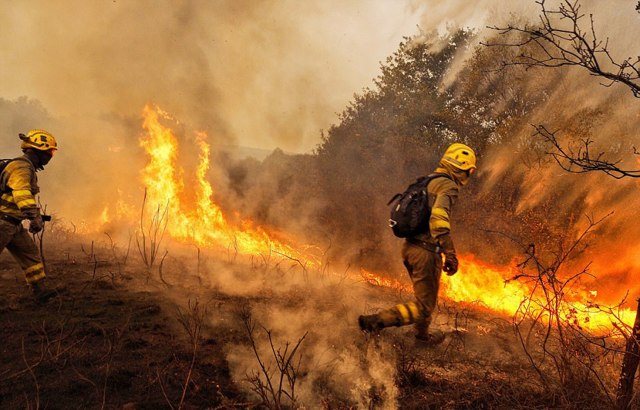
What to do if there is a fire? (Call the fire department). Look under your desk, everyone has been sent a letter with information about the telephone numbers of the security services. Let's remember them once and for all.
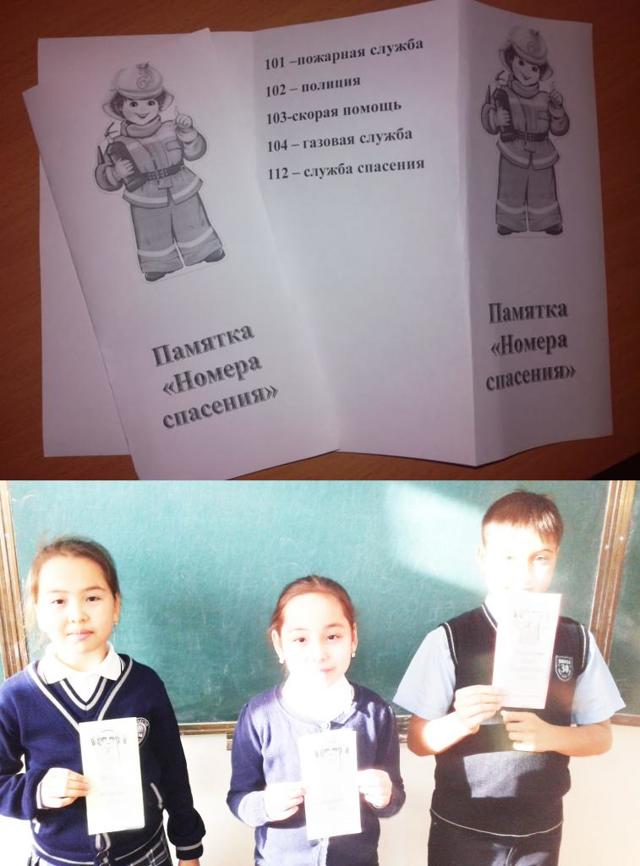
Each child is given a printed memo with the numbers of the police, ambulance, and fire department, which must be discussed during a safety lesson in elementary school. Students and the teacher voice them out.
Game "Safety Box"
U: I have a magic box in my hands. It stores various situations in which you can find yourself at any moment. What to do? The guys in our class will tell us about this now. Students come up to the teacher one by one and pull out a piece of paper.
Situation 1. You are playing hide and seek with your friends. But suddenly a stranger approaches you and offers you a ride in the newest model car. What will you do?
Situation 2. You and your friend are alone at home. The phone rang and you picked up. A male voice asks you: “Which adult is at home? What time will mom arrive? Are you home alone now?” Your actions.
Situation 3. You and your best friend are late for school. She is on the other side of the road. The traffic light shows a red signal, but there are no cars nearby. Your friend insists that you cross the road, because there are no cars anyway. What will you do?
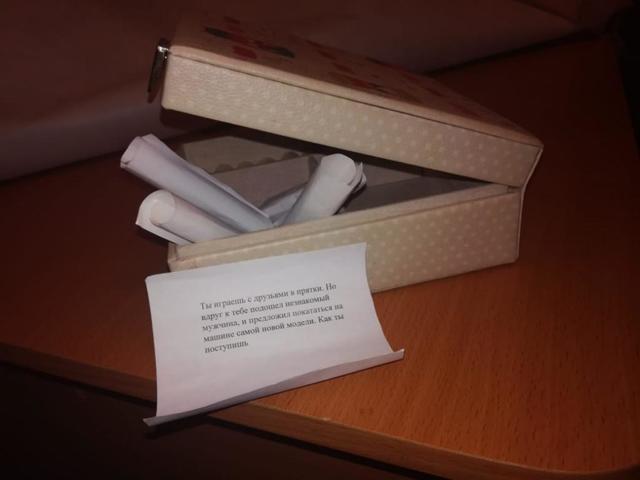
U: This concludes our safety lesson in elementary school. Let's once again repeat the rules that will help us in difficult times. (Once again they name all the points that were discussed in the lesson).
U: Friends, now your parents and I can rest easy. Knowing these rules, you will certainly not get into trouble. I wish you success in the new academic year.
Additional recommendations
- When planning a safety lesson on September 1 in elementary school, special attention should be paid to visual material and design. After all, visual methods increase the effectiveness of learning. The topic is very significant and students should understand it as much as possible.
- When working in groups, you can allow the roles in the team to be distributed: speaker, silence keeper, time keeper and others. This will allow all students in the class to be involved, even the most passive ones, and the teacher will be confident that the safety lesson in elementary school was not in vain. You can also assign a child to take photographs, which can then be used for reports.
- It would be a big plus to invite a fire department or police officer to a safety lesson at an elementary school. Children will take words more seriously if they come from a professional.
Source: https://www.syl.ru/article/403547/plan-uroka-bezopasnosti-v-nachalnoy-shkole
Perform developmental exercises from Ikyusha
Mathematics
Reading
The world
Logics
English language
Lesson 3. Stop, Look, Move!
Teach your child to ALWAYS stop in front of the road, even if:
- the traffic light is green,
- people cross the roadway
- you're in a big hurry,
- the ball or scooter rolled out onto the roadway.
Look around and make sure there are no moving cars nearby. Then cross the road at a calm pace.
Lesson 4. Toys on the road are dangerous!
Balls, cars, balls, rollercoasters and other entertainment can be a disservice if they are located next to the highway.
You MUST NOT play with any toys or toys near the road; they may roll away and get hit by a car.
When crossing the roadway, you need to hold the toy very tightly or give it to your parents so that it does not accidentally fall out. Even if suddenly an object appears on a zebra crossing, you need to calmly cross the road. Adults will take the toy out of the way themselves.
Road safety, why children get into accidents
Every month there are hundreds of road traffic accidents (RTAs) in which children are injured. During the summer months, such accidents increase markedly.
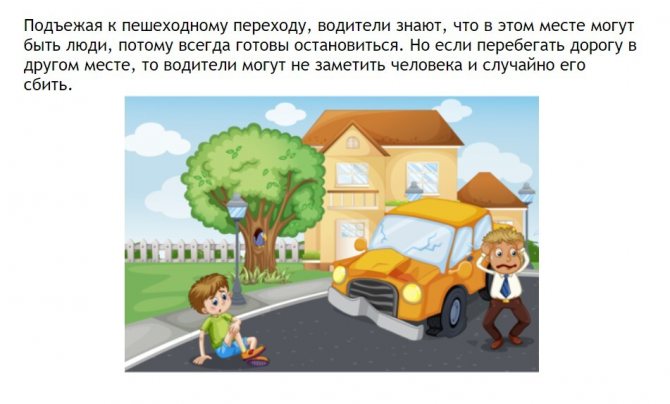
Unfortunately, children not only get injured, but also die. And this is a real grief for parents and loved ones. How to avoid this? There are several factors that cause children to become involved in road accidents. We will not consider tragic situations when they were injured while in a car involved in an accident, or became the victim of a drunk driver. But even if the accident occurred due to the fault of a child, responsibility for this lies with the adults - the driver did not foresee it, and the parents did not teach it.
Reasons why children become involved in road accidents:
- crossing the road in an unspecified place;
- sudden appearance of a child on the roadway due to a large object (public transport, fence, snow debris);
- crossing the road at an illegal traffic light;
- playing next to or on the roadway;
- cycling, rollerblading, scootering, skateboarding, etc.;
- inattention due to distraction by smartphones, headphones.
In addition to these factors of traffic violations, there are others: physiological and psychological. Due to their age, babies react more slowly, their field of vision is significantly narrowed, hence their poor orientation in space. Also, children under a certain age have a feeling of fear due to an approaching car. After all, in cartoons everything is completely different from real life.

